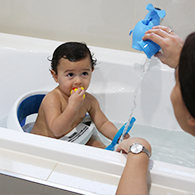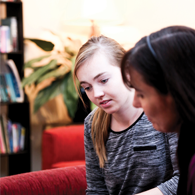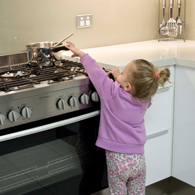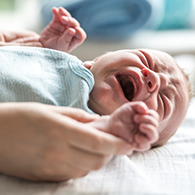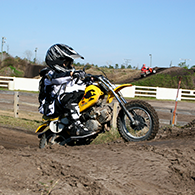Child restraints
Correct use of a child car restraint reduces the risk of death by up to 75%
Children are best protected when they are in the correct child car seat for their size and age.
Your child's size and fit in their child restraint is more important than their age. Age recommendations are guidelines only.
Information about child car restraint laws and child passenger safety recommendations in Australia can be found under More Information.
Common child restraint errors
Some of the common mistakes that parents make when they put their child in a car seat are listed below. Make sure your child is put in their car seat in the right way so they stay protected if you were to be in a crash.
You can set a good example for your child by wearing your seatbelt. Everyone must wear a seatbelt in Australia.
Moving from child car seat to adult seatbelt too soon
- Some parents move their child from a dedicated child car seat to an adult seatbelt too soon. Children are safer in the appropriate child car seat for their size and age
Twisted straps
- Make sure there are no twists in your child’s car seat harness.
Straps too high
- Some children have their straps through shoulder slots that are too high for them
- Make sure your child’s shoulder straps go through the slots that are closest to their shoulders.
Loose straps
- Make sure your child’s harness is done up firmly
- If you can pinch the straps, then the harness is too loose
Bulky clothing
- Jackets, jumpers and other bulky clothing can create a gap between your child’s body and the straps, making the straps too loose. If the straps are loose, your child will not be safe in a crash
- Bulky clothing should always be removed before putting your child in their car seat.
Top tether straps not used properly
- Make sure the top tether straps are firm and not loose or twisted
- Always connect the tether straps to the anchorage point directly behind the seat in your car
- Anchorage points can be found in the roof, on the floor or on the back of the seat of your car.
Look at your car seat instructions and your car owner’s manual for more information on how to install your child’s car seat. Get professional advice if you are unsure.
Child restraint laws
Age | National Child Restraint Law | Recommendations |
|---|---|---|
| Under 6 months | Rear facing only |
|
| 6 months to 4 years | Rear or forward facing car seat with an inbuilt harness | It may look like some children who are rear facing don’t have enough room for their legs. However, it is still safest for your child to stay rearward facing for as long as they can. You can tell if your child is too tall for the restraint if their shoulders are above the maximum shoulder height marker (if marked) or above the top harness strap slot (if not marked). |
| 4 years to 7 years | Forward facing car seat with an inbuilt harness or a booster seat with a lap and sash seatbelt or an inbuilt harness | It is safer to use a forward facing car seat and an inbuilt harness for as long as your child fits in it, before moving to a booster seat or a seatbelt. Children between the ages of 4 and 7 years can only travel in the front seat of a vehicle with 2 or more rows of seats if all other back seats are being used by children younger than 7 years in an approved child restraint or booster seat. You can tell if your child is too tall for the forward facing harness restraint if their shoulders are above the maximum shoulder height marker (if marked) or 2.5cm above the top shoulder harness strap slot (if not marked). |
| Booster seat with a lap and sash seatbelt or an inbuilt harness | It is safer to use a high back booster seat until your child is too tall for it and can safely pass the 5 step test to use a seatbelt. Most children will need to use a booster seat until 10-12 years of age. Booster cushions without a back are no longer made in Australia and are not recommended for use. |
- Since 2010, child restraints have height markers to guide when your child is ready to move to the next restraint. Get professional advice if you are unsure
- It is safer for children under 12 years of age to travel in the back seat of a vehicle rather than the front seat
- Don’t use a restraint that is more than 10 years old or one that has been involved in a crash. They may have damage that you cannot see and may not work properly
- If you are using a second hand restraint, make sure that the straps are not damaged, the plastic shell and buckle are not broken or cracked, you have all the parts and everything is working.
5 step test
Use the 5 step test to decide whether your child is ready to move from a forward facing child restraint to an adult seatbelt. It is important your child can meet all 5 steps so they can’t slide under the seatbelt or get injured from not sitting properly on the seat.
- Your child can sit with their lower back against the back of the seat
- Their knees can bend over the edge of the seat
- The sash part of the seatbelt goes across the middle of the shoulder and not across the neck
- The lap belt sits low across the hips and touches the thighs
- Your child can stay like this for the whole trip and can sit upright without slouching
Correct fitting
- Always follow the manufacturer’s instructions when you put a restraint in your vehicle
- If you need help, contact the manufacturer or an Authorised Restraint Fitting Station
- Some organisations and local councils offer free child restraint checks
- Having someone show you how to install a car seat is very important so you know how to use the child restraint correctly and move it into other vehicles if needed.
Child car seat testing
The Child Restraint Evaluation Program provides independent information to help you choose safe child car seats. The program tests child car seats and rates their level of protection in a crash. For more information, visit childcarseats.com.au

